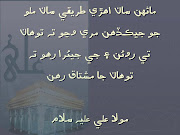Sindhu River the main life stream of Sindh has contributed to the economic well being from the ancient times. Ports and towns have flourished in its delta allowing navigation and trade from ocean to the inland up through Punjab. Arabs from west regarded India as heaven. Sindh being the rich territory at the frontiers was therefore invaded numerous times by plunderers and greedy empires of various aggressors from Greece, Turkistan, Persia, Iraq and Arabia.
The ancient history of Sindh can best be summarized as Vedic times through 3000 B.C., there after the Aryan culture followed by a gap and subsequently the rule of King Jaydrath in 1300 B.C. The religion of Arabians prior to Islam was very much similar to people of Sindhu Valley, pantheistic. When the Arabs captured Sicily in 53 H, they got hold of the gold idols, which they sold to the king of Sindh.
Alexander the Great's invasion (326-325 B.C.) faced hostile encounter and resistance in Sindh. This was greatly influenced by Brahmins who had persuaded the Sindhi King Sabbas to stand up and fight. To the horror of the local people, Alexander had a whole lot of Brahmins slaughtered. However he was so impressed with the quality and spirit of the Sindhi Brahmins that he captured and kept ten Brahmins with him. It is known that these ten Brahmins imparted wisdom and philosophy of Sindh to Alexander by answering many of his questions.
Greeks had noted that Sindhis were tall and slim and wore white leather shoes with thick soles "Juthies", to appear taller. Vanity in Sindhis is neither recent nor imported! Alexander had himself found Sindhis "healthy and temperate and partaking of community meals". Obviously the system of "langer" did not start with Sikhs. Greeks have one thing in common - Sindhi "bhoonda or buja" - the peculiar gesture of denunciation with open outstretched hand. In Greek it is known as "the moudja"which comes very close to buja. Was this a gift from Sindhis to Alexander or the other way around ?
From 100 B.C. to 100 A.C. Sindh came under the influence of Buddhism which was embraced by Emperor Kanishka whose third successor Vasudeva was King of Sindh. His coins have been found in Mohen-jo-daro. Around 200 A.C. Vedic influence reemerged in the upper classes and Buddhism became weaker. There after Sindh again saw variety of invaders till Gupta Dynasty took control of India's rule in 450 A.C. In 6th century Rai Sahasi the King of Sindh, was brother of the king of Chittor in Rajasthan. He was succeeded by Brahmin King Chach. He annexed Multan and fixed the border of Sindh with Kashmir and Iran. He had deodar and poplar trees planted along the frontier.
Chach had two sons Dahir and Daharsiah. Dahir ruled upper Sindh at Alor and Daharsiah ruled lower Sindh at Brahmanabad, near modern Nawabshah. Between 638 A.D. and 711 A.D. the Arabs launched as many as fifteen attacks against Sindh. In last attack of 712 A.D. Mohammed Bin Qasim succeeded in defeating King Dahir. It was on the evening of Thursday the 16 June 711, the saddest day in the History of Sindh when Sindhi King died due to treason in the local camp. After two years Arabs influence remained confined only to the port Debal and the coastline. Dahir's son Jaisiah assisted by Bappa Rawal of Chittor (A.D. 739-753) defeated the Arab army of Salim who surrendered and signed peace treaty that Arabs would never attack Sindh. It is significant that in the succeeding centuries Arabs never did attack Sindh.
Soomras the indigenous population of Sindh, a Rajput clan took over the rule by middle of 11th century. Names of 21 rulers for nearly three centuries are recorded in the history. During this period Sindh saw patriotism and folk literature. Soomras were Hindus with some Muslim influence, who became nominal Muslims while retaining their Hindu culture.
Folk stories of Rai Diyach and Lila-Chanesar are famous which have been made immortal by Shah Abdul Latif the Mahakavi of Sindh in his immortal compositions "Sur Sorath" and "Sur-Lila-Chanesar".
However the Sindhi epic of the period par excellence is the "Umar Marvi". Marvi reminds us of Sita in her confinement in Lanka. Interestingly enough ,both Ravana and Umar, old villains, were gentlemen enough; they did not force their will on their captive beauties. The Umar Marvi is an all abiding source of inspiration for Sindhis and Sindhyat in Hind, Sindh and all over the world.
From 1500 to 1700 A.C. Moghuls ruled Sindh. During this period Thatta was Capital for lower Sindh. In later part of 17th century Kalhoras gained power in the upper Sindh and subsequently took over the administration of whole Sindh. During this period Sindhi poetry reached its climax in the compositions of Shah Abdul Latif.
Talpur Amirs came in power from 1782 A.C. till 1843 A.C. They were defeated by Britishers who annexed Sindh to Bombay Presidency. During Talpurs period many forts and outposts were built along the frontier.
During British rule the introduction of railway lines, creation of Sukkur Barrage for improved irrigation system as well as eradication of Hurs the armed bandits brought about safe living conditions. Education at college level also became possible with Sindh being attached to Bombay University in the Bombay Presidency.
India's independence from British rule in 1947 resulted in unfortunate partition of the country with Sindh falling into Pakistan the Islamic State. Sindhi Hindus were forced to abandon their ancestral home land along with all their valuable possessions. It was the tragic saga of sufferings with dreadful physical, moral, mental and economic predicament of a very large peace loving Sindhi Community. The saddest part of the story is that Sindh was the only state which was wholly given away in partition unlike Punjab and Bengal. Sindhi Hindus gave the greatest sacrifice in India's freedom. Little they knew that taking active part in the Quit India Movement during the freedom fight against the foreign rule they will turn out to be the refugees in their own country.
LANGUAGE
Sindhi language has gone through transitions with the history of Sindh. Original script was descendant of Prakrit, and Sanskrit. Devnagri Script was used before Britishers took over the rule of Sindh in 1843. Perso- Arabic Script was developed by Britishers for Sindhis and imposed as official script in 1853.
To day the Sindhi population living in minority status in various parts of India and else where in the world, lacks the availability of Sindhi language education in the main stream curriculum of the local schools and colleges. Naturally the new Sindhi generation has neither the opportunity nor the incentive to learn their own language. Currently even in Pakistan the official language in Sindh is not Sindhi but Urdu.
This alone could be the single biggest blow to the survival of Sindhi community. Devnagri script has received success in small number of schools located in the pockets where Sindhis started their new life as refugees. Sindhis have since scattered all over India and other continents of the world where Sindhi is not taught in either Perso-Arabic or Devnagri script.
The question therefore arises, will Sindhi language survive as a viable language in Arabic or Devnagri script excepting Sindh and some parts of India? What will happen to Sindhis who are spread all over the world? Is there an easy solution? Can Sindhi be saved from extinction by introducing once again a new script. For a change could we consider adopting Roman Script. Our new generation learns Roman Script all over the world. The computer knowledge is fast becoming inseparable part of future education and daily life. This field too is dominated by English Language.
Should we not therefore adopt Roman Script to teach Sindhi to our youth? Transcription in Roman script using Sindhi phonics could be a matter of research and development by expert educationalists. The Britishers devised present Perso-Arabic script for us in 1853. Why should we not evolve a Roman Script for our dear Sindhi ? It may be the only logical and practical solution for a Border less Sindhi Nation of tomorrow.
Survival of language is fundamental requirement for identity and success of a community. Parents must cultivate the habit of speaking with each other in Sindhi so as to create a healthy example for younger generations. Sindhi families should proudly speak and greet each other in Sindhi at parties and all social functions. In the global society of 21st century, Sindhi should not become a naturalized second class citizen without language, culture and identity of his own.
PLACES
Area of Sindh is about 54,000 square miles. Districts Sukkur in the North is adjoining Punjab. Karachi and Thatto in the South are two coastal districts along the Arabian Sea. Some major cities of Sindh are: Karachi, Thatto, Hyderabad, Mirpur Khas, Nawabshah, Khairpur, Sukkur, Shikarpur, Larkano, Dadu and Sehwan.
Karachi port was the largest and most advanced town of Sindh at the time of partition. Karachi Port had its anchorage situated in the sheltered lagoons between islands of Manohora and Kiyamari. It had a character of a fastest growing cosmopolitan city with contributions from various communities such as Parsees, Gujratis, Punjabis, Sindhis and Britishers. In 1947 the Capital of Pakistan was set in Karachi and later it was detached form Sindh. The Government of Sindh was shifted to Hyderabad.
There are many other towns of importance to Sindhis from historical and religious point of view. Famous Sadhbelo near Sukkur-Rohri is an island-temple in the middle of Sindhu Nandi (River). Nasarpur where Udero Lal Sain and Halla where Shah Abdul Latif Bhitai were born, both are located in Hyderabad District. Hyderabad was a city with its distinct skyline dominated by "Mangh" the wind-catchers. This energy-free ventilation system provided cooling draft inside the houses during the intense heat of summer. The simple principle deployed was based on the direction and temperature of prevailing winds

.jpg)



















No comments:
Post a Comment